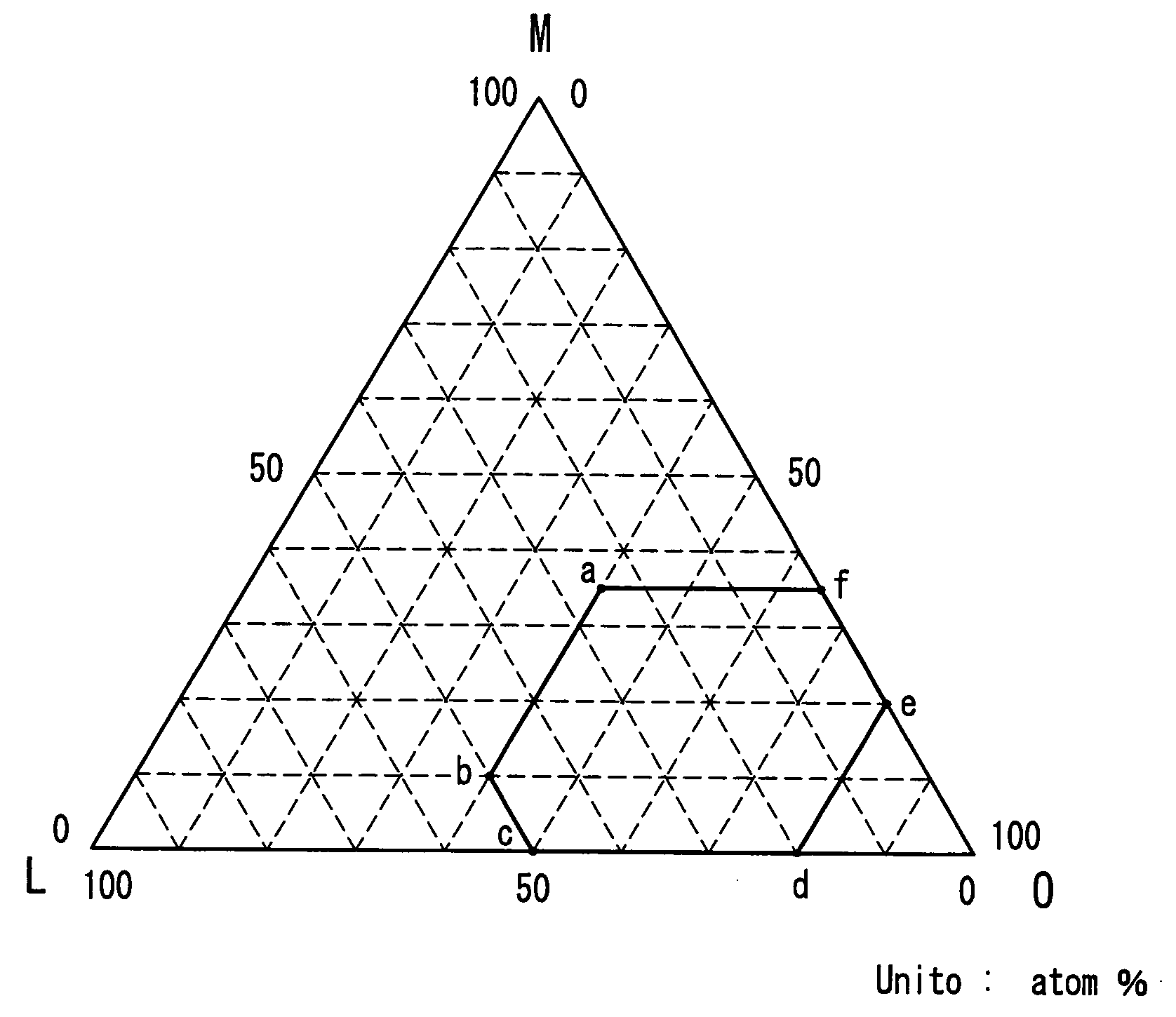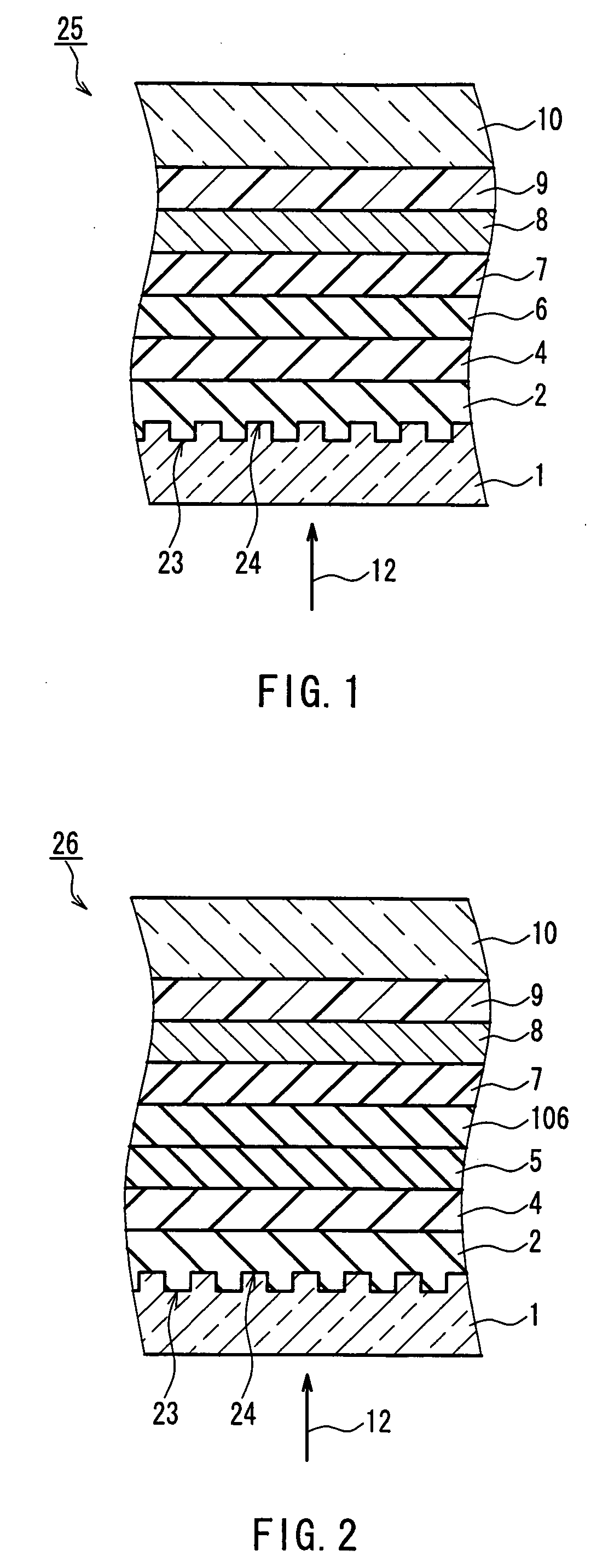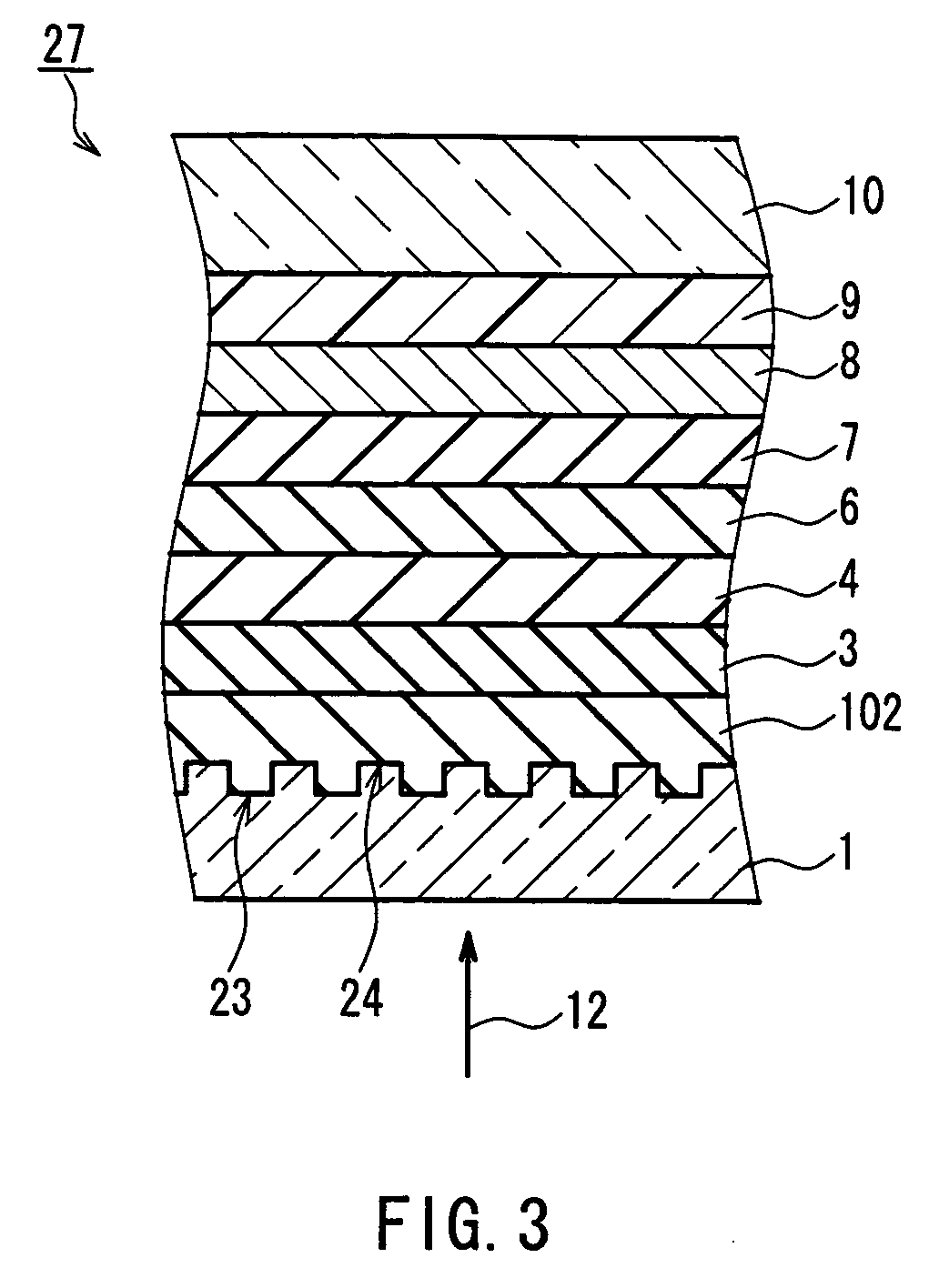Information recording medium and method for producing the same
a technology of information recording medium and information recording layer, which is applied in the direction of photosensitive materials, instruments, photomechanical equipment, etc., can solve the problems of increasing the temperature of the dielectric layer, reducing the light absorption of the recording layer, and requiring low thermal conductivity and transparency. , to achieve the effect of low thermal conductivity, good recording sensitivity and high transparency
- Summary
- Abstract
- Description
- Claims
- Application Information
AI Technical Summary
Benefits of technology
Problems solved by technology
Method used
Image
Examples
examples
[0268] Next, the present invention will be described more specifically by way of examples.
[0269] Test 1
[0270] The relationship between the nominal composition (in other words, the composition indicated nominally by a sputtering target manufacturer when being supplied) of the sputtering target made of an oxide-based material used in the production of the information recording medium of the present invention and the analyzed composition was confirmed by a test.
[0271] In this test, the sputtering target indicated as (ZrO2)25(SiO2)25(Ga2O3)50 (mol %) corresponding to the formula (19) as the nominal composition was made into powder, and the composition was analyzed by the X-ray microanalyzer method. As a result, the analyzed composition of the sputtering target was obtained, not as the formula (19) indicated by the ratio of the compounds (mol %), but as the formula (17) indicated by the ratio of the elements (atom %). Table 1 shows the analyzed results. Furthermore, Table 1 also shows...
example 1
[0277] In Example 1, in order to investigate the transparency of the oxide-based material layer, the complex refractive indexes (n-ki, n: refractive index, k: extinction coefficient) in a red region (wavelength 660 nm) and a bluish-purple region (wavelength 405 nm) were measured. In the procedure, a sample was prepared in which a thin film containing an oxide-based material is formed on a quartz glass substrate, and the complex refractive index of the thin film was measured by ellipsometry. The prepared oxide-based materials are mixtures of an oxide of at least one element selected from the group consisting of Zr and Hf and an oxide of at least one element selected from the group consisting of La, Ce, Al, Ga, In, Mg and Y, and mixtures further mixed with Si. The prepared oxide-based materials are 16 types as bellow: (ZrO2)20(La2O3)80, (ZrO2)20(CeO2)50, (ZrO2)20(Al2O3)80, (ZrO2)20(Ga2O3)80, (ZrO2)20(In2O3)80, (ZrO2)20(MgO)80, and (ZrO2)20(Y2O3)80, which are mixtures of the two oxides...
example 2
[0281] When the same oxide-based material layer as in Example 1 except that HfO2 is contained instead of ZrO2 was used to investigate its transparency, the same results as in Example 1 were obtained. More specifically, with (HfO2)X1(E1)100-x1 (mol %) and (HfO)X1(SiO2)z(E)100-X1-Z (mol %), k=0.00 was obtained at λ=660 nm and λ=405 nm. That is to say, it was confirmed that they were transparent.
PUM
| Property | Measurement | Unit |
|---|---|---|
| thickness | aaaaa | aaaaa |
| thickness | aaaaa | aaaaa |
| wavelength | aaaaa | aaaaa |
Abstract
Description
Claims
Application Information
 Login to View More
Login to View More - R&D
- Intellectual Property
- Life Sciences
- Materials
- Tech Scout
- Unparalleled Data Quality
- Higher Quality Content
- 60% Fewer Hallucinations
Browse by: Latest US Patents, China's latest patents, Technical Efficacy Thesaurus, Application Domain, Technology Topic, Popular Technical Reports.
© 2025 PatSnap. All rights reserved.Legal|Privacy policy|Modern Slavery Act Transparency Statement|Sitemap|About US| Contact US: help@patsnap.com



